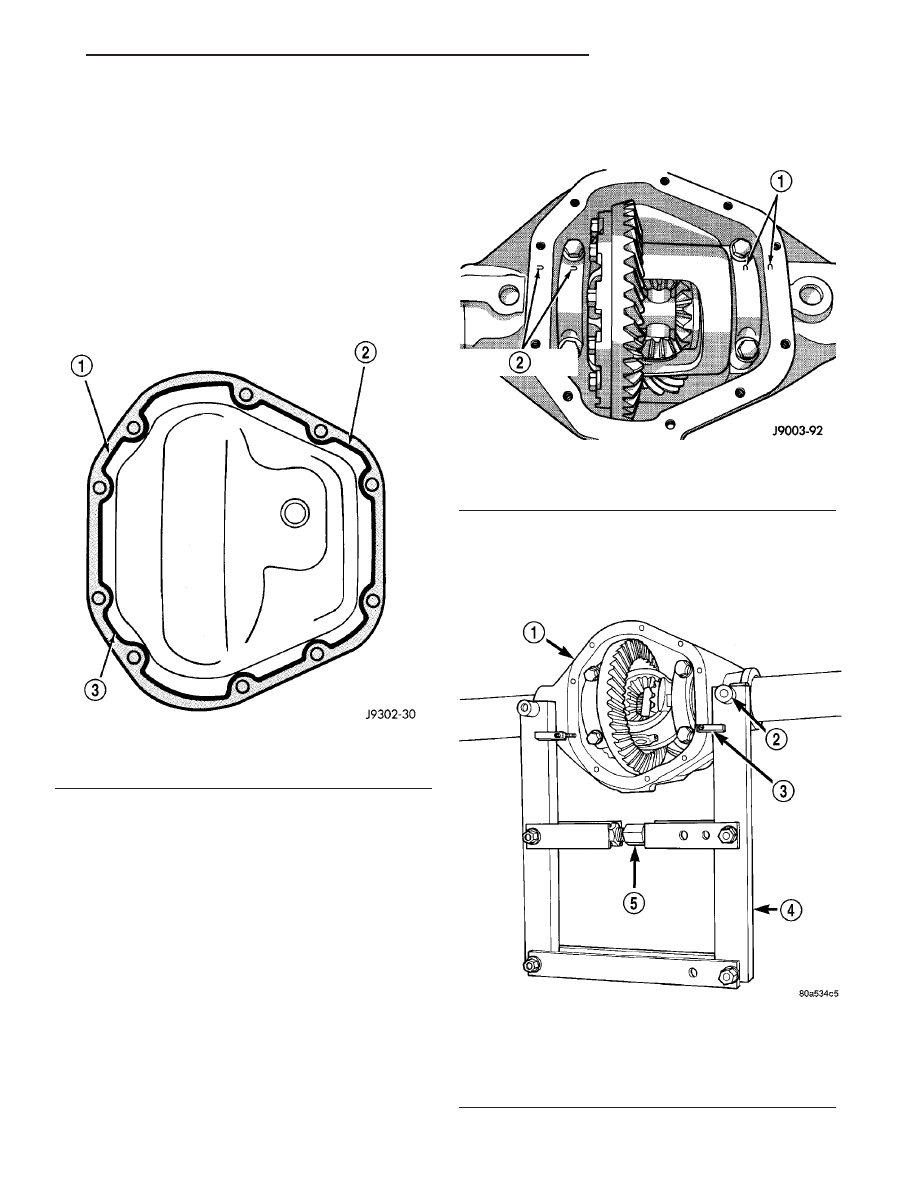Jeep Wrangler TJ. Manual - part 232

DIFFERENTIAL COVER
REMOVAL
(1) With vehicle in neutral, position vehicle on hoist.
(2) Remove drain plug.
(3) Remove cover bolts.
(4) Remove cover and drain lubricant.
INSTALLATION
(1) Apply a 6.35mm (1/4 in.) bead of Mopar Sili-
cone Rubber Sealant or equivalent to the housing
cover (Fig. 39).
CAUTION: If housing cover is not installed within 3
to 5 minutes, the cover must be cleaned and new
RTV applied. Failure to heed caution may result in
damage.
(2) Install cover and identification tag. Tighten
cover bolts in a criss-cross pattern to 41 N·m (30 ft.
lbs.).
(3) Fill differential to specifications.
(4) Install fill plug and tighten to 34 N·m (25 ft.
lbs.).
DIFFERENTIAL
REMOVAL
(1) Remove differential fill plug.
(2) Remove differential cover and drain fluid.
(3) Remove axle shafts.
(4) Note reference letters stamped on the bearing
caps and housing machined sealing surface (Fig. 40).
(5) Loosen differential bearing cap bolts.
(6) Position Spreader W-129-B with Adapter Kit
6987B on differential locating holes (Fig. 41). Install
hold-down clamps and tighten the turnbuckle finger-
tight.
Fig. 39 HOUSING COVER - TYPICAL
1 - SEALANT SURFACE
2 - SEALANT
3 - SEALANT THICKESS
Fig. 40 BEARING CAP REFERENCE
1 - REFERENCE LETTERS
2 - REFERENCE LETTERS
Fig. 41 SPREADER LOCATION
1 - DIFFERENTIAL HOUSING
2 - DOWEL
3 - SAFETY HOLD DOWN
4 - SPREADER
5 - TURNBUCKLE
TJ
REAR AXLE - 194RBI
3 - 105